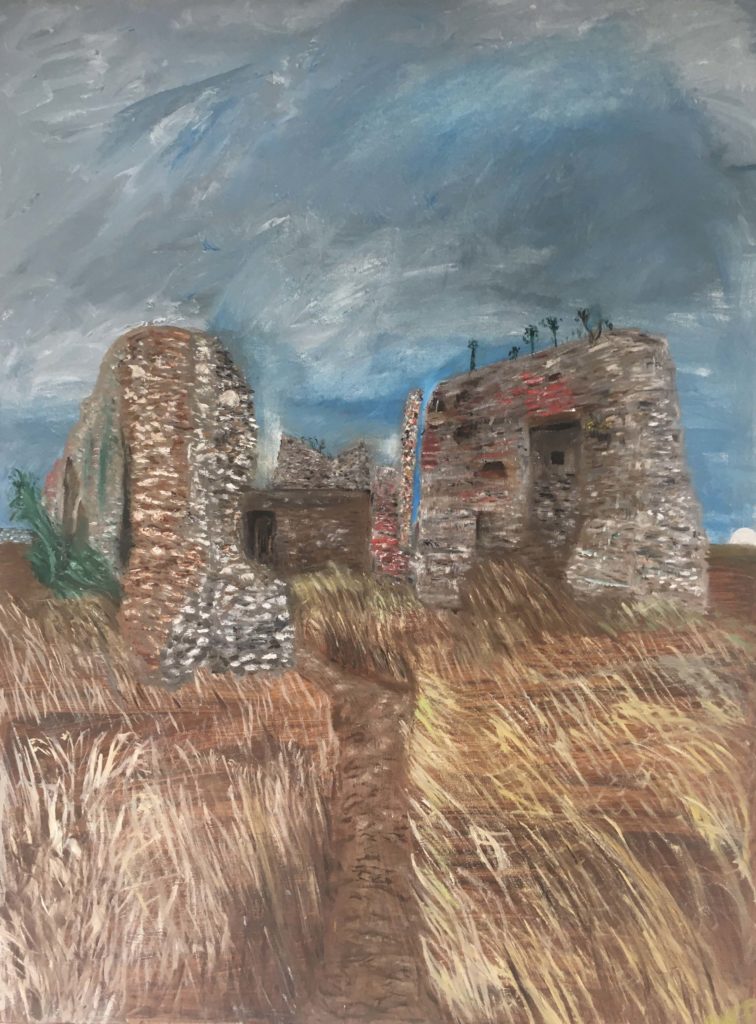Minsmere Nature Reserve is a wonderful place but until my last visit in July I did not know that it impresses with human history as well, at least apart from the WW2 anti-tank cubes of course.
Turning back from the beach on one of those very hot days we have all experienced lately, I saw the outlines of beautiful ancient arches of ruined buildings, alone in the distance. Getting closer I read that it was a chapel, the only above ground structure remaining of the first Leiston (‘Leystone’) Abbey. It was founded in 1182 by the Premonstratensian Order (the ‘white canons’, their only foundation in Suffolk). But the marshy terrain and inundations of sea were a double whammy of inconvenience and impediment to its growth. In 1363, papal licence was granted to remove to a new site further inland, hence the Leiston Abbey we know today. The first abbey was substantially demolished and materials reused for the new one, with construction costs being met by the patron Robert de Ufford, Earl of Suffolk. A chapel was retained on the original site, dedicated to St Mary. One abbot at the new site, John Green, resigned his office to live as an anchorite at the old site in 1531. He was actually the last but one abbot. The second abbey was also soon to go, as part of Henry V111’s dissolution of monasteries, in 1537. Read more in the listing by Historic England here.
The building history does not stop there. In World War Two the chapel had a pill box built in the altar space. From canon to cannon? So I have entitled my piece.
Today Sizewell B can be seen from the chapel.
It turned out that I am not the first artist to be inspired by first sighting of the ruins. An excellent sculpture entitled A Wing and a Prayer by the glass artist Arabella Marshall was installed in 2021, complementing and enhancing a space where a window space was once.
My take was to see symbols of religion, war and power (Sizewell being latest), with time and nature moving over, if not conquering, their path. Vegetation now extends into and over the ruined chapel. The day I visited was in the heatwave as I said. As can be seen in my painting the grass was very dry and yellowy. Somehow this was even more fitting. Nature had taken over, but nature itself dies and comes again, maybe in different form. But, as ever, something new for the scene came to me in doing the work. As I painted the vegetation on the far left, with the sea in background (which I have raised a little, as I have slightly realigned Sizewell on the other side, to get in the view), a sea monster emerged.
August 2022







Very strong image of impressive sharp grasses and an angry sky with skeletal stones between.
It stands alone in portrait form, asking questions, without the need of dragon or golf ball,
We really like the picture, rather different from your other work, as well as the commentary and the title.
I particularly like the dry grassland leading to the ruins capturing an unhappy event that has led to such ruins
Eleanor
This is on one of my favourite Suffolk walks (Minsmere to Eel’s Foot round walk) which encompasses the best the county has to offer: heartland, woodland, marshes, shingle beach and a cracking pub. You’ve captured a sense of the defiance here. The ruins have not yielded yet. Particularly like the moody sky and the contrast with the yellow grass. Fascinating post, too.
Great painting. So much going on and so many different aspects, especially the sea monster, emerging from the foundations (undercroft?). Great summary of the history, too. Our landscape, even individual buildings, a palimpsest. Interesting (for a non-artist) how things interact in the artistic process. Present and past mingle.
I like this. Lots of texture, turbulence, a hint of menace in the remains, the barely still upright walls, the mysterious path
Thanks Ant, the longer I spend together with it, the deeper the connection I feel with the work